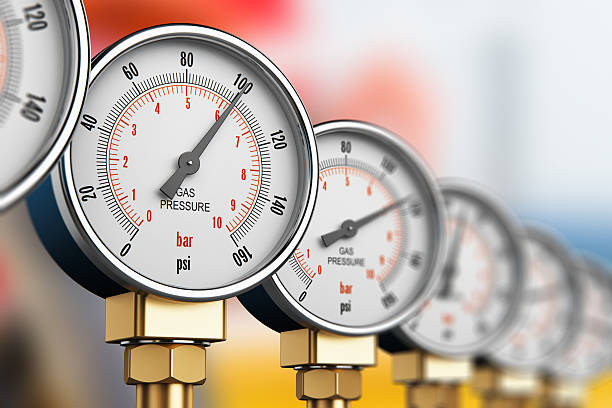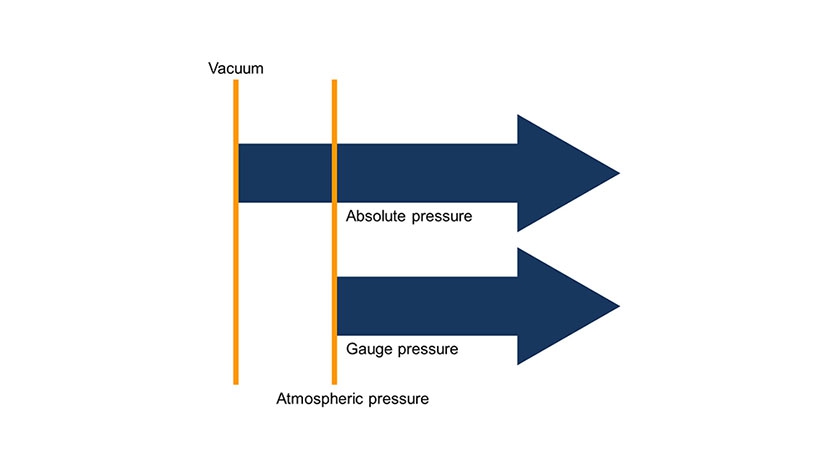Unit 12: Compressed Gasses and Cryogenics
69 Unit 12: Pressure Basics
Pressure is a force applied over an area. If we apply a force to a known area then we can calculate the pressure. This is the fundamental principle behind most pressure measuring devices such as gages.

There are a few different units for pressure measurement
- psi (pounds per square inch) – most common in the United States
- Pascal (newton per square meter)
- Inches of Mercury or Millimeters of Mercury (low pressure measurement only)
- atm (atmospheres)
and a few others that are less commonly used. There are two reference points for pressure, absolute vacuum and atmospheric pressure.
Absolute vacuum is impossible to achieve on Earth. The closest approximation is in space. When we reference pressures without the influence of the atmosphere, we call that absolute pressure. The atmosphere around us provides about 14.7 psi of pressure on Earth
Most of the gages that are in facilities are not measuring absolute pressure. They are measuring “gage pressure”, or pressure that is referenced from the atmosphere pressure.
